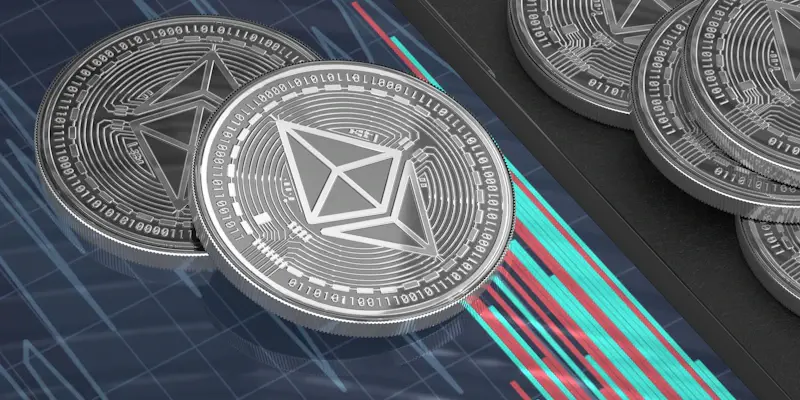In a rapidly evolving decentralized finance (DeFi) landscape, Solana has managed to outshine Ethereum, particularly in decentralized exchange (DEX) volumes and revenue generation. For the last few months, the comparison between Solana and Ethereum has highlighted significant advantages in favor of Solana, catapulting it into a prominent position within the crypto market. This shift is largely attributed to Solana’s impressive transaction speeds and its appealingly low fees, attracting both developers and traders.
Solana DEX Volume Surges Past Ethereum
Consistent Performance Over Recent Months
Solana’s decentralized exchanges (DEXs) have consistently outperformed Ethereum’s platforms in trading volume, as evidenced by data from DeFiLlama. Specifically, in the current month, Solana DEXs processed an impressive $60 million in volume, in contrast to Ethereum’s $34 million. This trend has been evident since October, with January being a pivotal month where Solana’s DEXs hit a remarkable $258 billion in trading volume, overshadowing Ethereum’s $86 billion.
One of the principal reasons behind this success is Solana’s lower transaction costs. This economic advantage is not only attracting individual traders but also encouraging developers to launch projects on Solana’s blockchain, ensuring a steady influx of activity. Given these dynamics, it’s evident that Solana’s user-friendly and economical approach significantly contributes to its burgeoning popularity and trading volume.
Financial Metrics Reflecting Solana’s Growth
Not only does Solana outperform Ethereum in trading volume, but it also shines in terms of revenue generation. So far this month, Solana’s network has generated an impressive $25 million in revenue as opposed to Ethereum’s $16 million. Reflecting on January figures, Solana remained ahead, earning $124 million against Ethereum’s $109 million. These statistics demonstrate that Solana isn’t just gaining traction due to its low costs, but it’s also establishing itself as a profitable and competitive network in the DeFi ecosystem.
The SOL-ETH ratio provides further insight into Solana’s growth over Ethereum. Despite Ethereum’s larger market cap and more total value locked (TVL), the evolving metrics and investor sentiment increasingly favor Solana’s energetic surge.
Comparative Analysis of Solana and Ethereum
Ethereum’s Dominance in Asset Holdings
Despite Solana’s impressive DEX volume and revenue metrics, Ethereum continues to dominate in terms of asset holdings within the DeFi environment. On-chain data reveals that Ethereum holds a staggering $57 billion in DeFi assets compared to Solana’s $9 billion, underscoring Ethereum’s entrenched position in the market. This considerable difference in assets signifies Ethereum’s longstanding presence and the trust it has built over the years among investors and developers alike.
Ethereum’s substantial holdings also reflect its expansive ecosystem, encompassing numerous decentralized applications (dApps) and platforms beyond DEXs. This expansive network reinforces Ethereum’s dominance and suggests that, while Solana might excel in certain areas, Ethereum’s broad infrastructure and larger market cap lend it a formidable presence in the DeFi space.
Future Prospects and Market Dynamics
While Ethereum currently holds the upper hand in terms of asset value, Solana’s rapid ascension hints at possible shifts in the market dynamics. Solana’s price trajectory displays encouraging signs, with its current valuation hovering above the $200 mark and potential projections suggesting it might reach $250. Conversely, Ethereum’s price has recently dipped below key support levels, bottoming out at $2,159.
Nevertheless, the competitive edge demonstrated by Solana in volumes and revenue, combined with its high-speed transaction capabilities and low fees, showcases a vibrant, evolving landscape. While Ethereum’s foundational strengths ensure its continued relevance, Solana’s innovations and market penetration point toward a dynamic rivalry. This evolving competition between these blockchain giants indicates that the DeFi space is set to undergo further transformations, driven by both incumbent leaders and emerging disruptors.
In the rapidly evolving world of decentralized finance (DeFi), Solana has emerged as a noteworthy contender, especially when compared to Ethereum. Solana has managed to surpass Ethereum in decentralized exchange (DEX) volumes and revenue generation, securing its place as a major player in the crypto market over the past few months. This impressive rise of Solana can be attributed to its remarkable transaction speeds and notably low fees, which have drawn a significant number of developers and traders to its platform.
As the DeFi landscape continues to grow and evolve, the competition between Solana and Ethereum is likely to intensify. However, for now, Solana’s efficient and user-friendly network appears to give it an edge, making it a formidable force in the decentralized finance arena.

